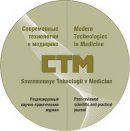
Algorithms of Osteoporosis Diagnostics, Prevention and Management in Knee Replacement
The aim of the investigation was to develop the algorithms of preoperative and postoperative diagnostics, prevention and management of osteoporosis in patients after knee replacement.
Materials and Methods. Based on densitometry and laboratory findings we analyzed bone mineral density in 204 patients, who had undergone knee replacement, among them women amounted 76.5%, men — 23.5%; mean age being 61.55 years. 87 patients (42.7%) in the study group were diagnosed osteopenia or osteoporosis, among them there were 84 (41.2%) female patients; 22 patients (10.8%) were found to have secondary osteoporosis; 65 (31.9%) — postmenopausal osteoporosis, the rest of the patients were found nothing.
Results. The suggested algorithm of preoperative osteoporosis diagnostics and management in endoprosthesis replacement provides early detection of gonarthrosis and reduced bone mineral density, and enables to provide differentiated therapy and perform a planned total knee replacement successfully. The tactics of postoperative control, prevention and management enables to prevent progressive bone mineral density reduction in patients after arthroplasty, and reduce the risks of early instability of an implant. The follow-up period was 9 years, no cases of aseptic instability were observed.
- Sikilinda V.D., Alabut A.V., Salum N.Yu., Fedotov P.A., Gorbatenko A.I., Dubinskiy A.V., et al. Osobennosti biomekhanicheskikh issledovaniy metaepifizarnykh otdelov kostey. V kn.: Osobennosti okazaniya kvalifitsirovannoy pomoshchi patsientam pri lechenii povrezhdeniy i zabolevaniy sustavov v usloviyakh travmatologicheskogo punkta i statsionara [Peculiarities of biomechanical studies of metaepiphysial bone parts. In: The characteristics of the delivery of qualified health care for patients with atrophic injuries and diseases in emergency stations and hospitals]. Nauch. red. Sikilinda V.D. [Sikilinda V.D. (editor)]. Rostov-on-Don: Izd-vo RostGMU; 2012. P. 118–122.
- Povoroznyuk V.V., Grigor'eva N.V. Menopauza i kostno-myshechnaya sistema [Menopause and musculoskeletal system]. Kiev; 2004; 512 p.
- Alekseeva L.I., Zaytseva E.M. Subkhondral'naya kost' pri osteoartroze: novye vozmozhnosti terapii [Subchondral bone in osteoporosis: new capabilities of therapy]. Rus Med Z — Russian Medical Journal 2004; 12(20): 1133–1137.
- Teitelbaum S.L. Bone resorption by osteoclasts. Science 2000; 289: 147–148.
- Albertazzi P., Steel S.A., Howarth E.M., Purdie D.W. Comparison of the effects of two different types of calcium supplementation on markers of bone metabolism in a postmenopausal osteopenic population with low calcium intake: a double-blind placebo-controlled trial. Climacteric 2004; 7(1): 33–40.
- Fernández-Pareja A., Hernández-Blanco E., Pérez-Maceda J.M., Riera Rubio V.J., Palazuelos J.H., Dalmau J.M. Prevention of osteoporosis: four-year follow-up of a cohort of postmenopausal women treated with an ossein-hydroxyapatite compound. Clin Drug Investig 2007; 27(4): 227–232.
- Zotkin E.G., Kosul’nikova E.N., Grigor’eva A.L., Nikolenko E.S. Vozmozhnosti kombinirovannogo preparata kal’tsiya i vitamina D (Natekal’ D3) v profilaktike senil’nogo osteoporoza [The possibilities of calcium and vitamin D (Natecal D3) combination medication in senile osteoporosis prevention]. Rus Med Z. Revmatologiya — Russian Medical Journal. Rheumatology 2006; 14(25): 1859.
- Kanis J.A., Burlet N., Cooper C., Delmas P.D., Reginster J.-Y., Borgstrom F., Rizzoli R. European guidance for the diagnosis and management of osteoporosis in postmenopausal women. Osteoporosis International 2008; 19: 399–428.
- Lesniewski P.J., Testa N.N. Stress fracture of the hip as a complication of total knee replacement. J Bone Joint Surg 1982; 64: 304–306.
- McElwaine J.P., Sheehan J.M. Spontaneous fractures of the femoral neck after total replacement of the knee. J Bone Joint Surg 1982; 64: 323–325.
- Hendel D., Beloosesky Y., Weisbort M. Fracture of the hip after knee arthroplasty — an unusual case with pain in the knee. Acta Orthop Scand 2001; 72: 194–195.
- Dreval' A.V., Marchenkova L.A., Lesnyak O.M. Sovremennyy vzglyad na rol' kal'tsiya i vitamina D v profilaktike i lechenii osteoporoza [Modern views on calcium and vitamin D role in osteoporosis prevention and management]. Ortopediya, travmatologiya i protezirovanie — Orthopedics, Traumatology and Prosthetic Repair 2009; 4: 123–127.
- Troptsova N.V., Nikitinskaya O.A., Demin N.V., Benevolenskaya L.I. Profilaktika postmenopauzal’nogo osteoporoza: rezul’taty trekhgodichnogo nablyudeniya [Postmenopausal osteoporosis prevention: the results of a 3-year follow-up]. Nauchno-Prakt Revmatol — Research and Practice Rheumatology 2006; 5: 25–32.
- Makarov S.A., Makarov M.A. Otsenka dinamiki mineral’noy plotnosti kostnoy tkani vokrug endoproteza posle operatsii total’nogo bestsementnogo endoprotezirovaniya tazobedrennogo sustava u bol’nykh s revmaticheskimi zabolevaniyami [The assessment of the changes in minimal bone tissue density around an implant after total hip replacement in patients with rheumatic diseases]. Sovremennaya revmatologiya — Modern Rheumatology 2008; 2: 63-66.










